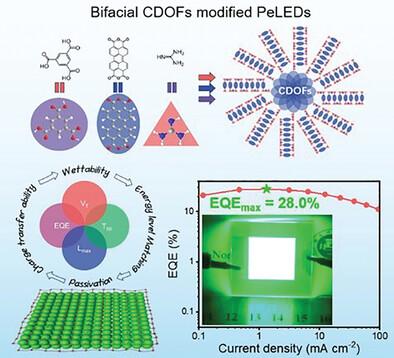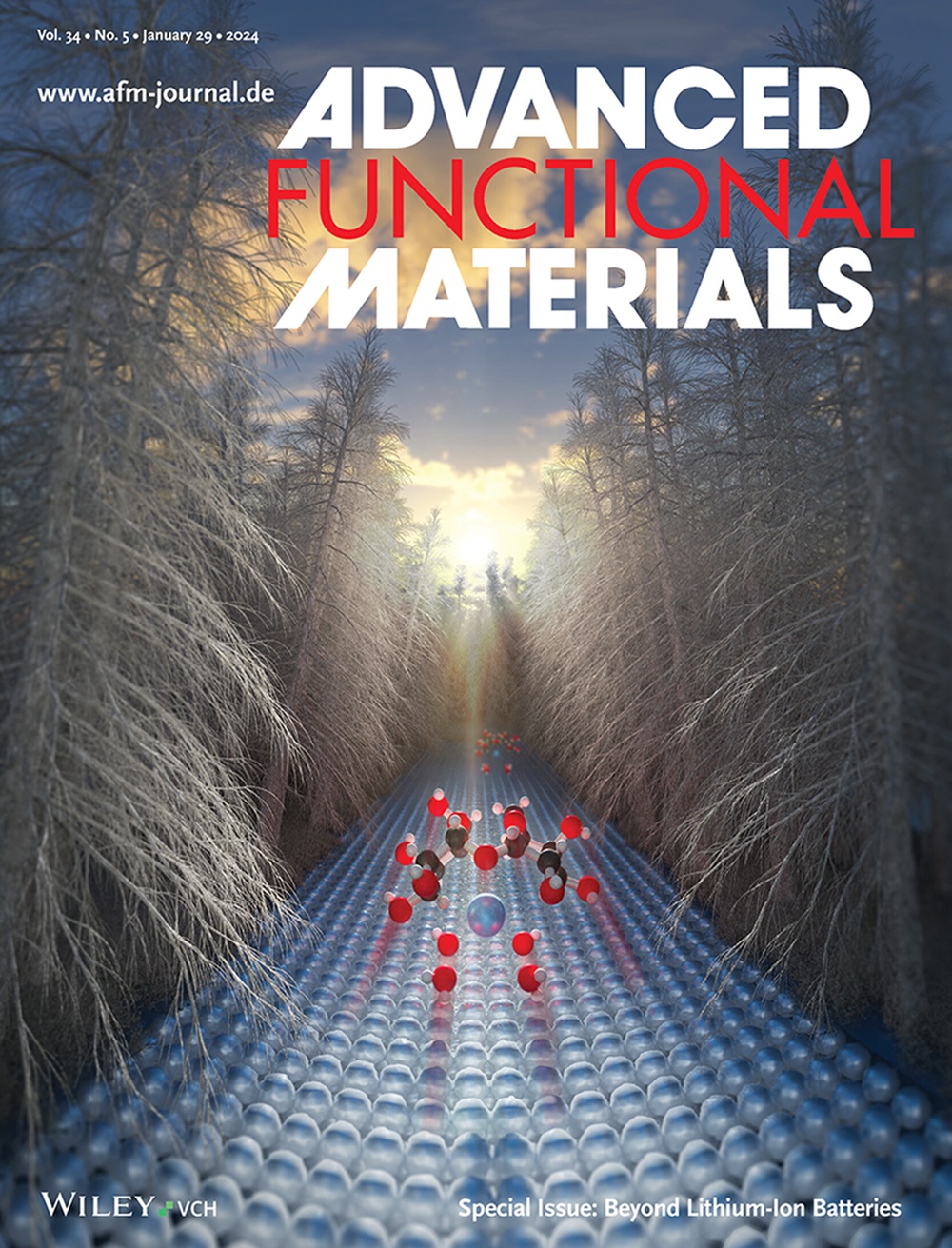Minimizing Interfacial Energy Losses with Carbon Dot Bifacial Modification Layers for High-Efficiency and Stable Perovskite LEDs
IF 18.5
1区 材料科学
Q1 CHEMISTRY, MULTIDISCIPLINARY
引用次数: 0
Abstract
Perovskite light-emitting diodes (PeLEDs) have reached near-unity photoluminescent quantum yields (PLQYs), but further improvements in electroluminescent efficiency are constrained by interfacial energy losses between the emissive layer and charge transport layers. In this study, multifunctional carbon dot organic frameworks (CDOFs) are introduced as a dual-interface modification material for perovskite layer. This approach effectively passivates both the upper and buried interfaces, boosting the PLQY to nearly 100% and enabling an external quantum efficiency of 28.0%. The CDOFs also facilitate balanced charge injection, achieving a low turn-on voltage of only 1.9 V, significantly below the bandgap voltage. Additionally, the exceptional defect passivation imparted by CDOFs significantly bolsters structural stability, achieving a T50 operational lifetime of 81.7 min at an initial ultrahigh luminance of 10 000 cd m−2, with no detectable Joule heating. This study underscores the potential of CDOFs in significantly advancing PeLED performance.

求助全文
约1分钟内获得全文
求助全文
来源期刊

Advanced Functional Materials
工程技术-材料科学:综合
CiteScore
29.50
自引率
4.20%
发文量
2086
审稿时长
2.1 months
期刊介绍:
Firmly established as a top-tier materials science journal, Advanced Functional Materials reports breakthrough research in all aspects of materials science, including nanotechnology, chemistry, physics, and biology every week.
Advanced Functional Materials is known for its rapid and fair peer review, quality content, and high impact, making it the first choice of the international materials science community.
 求助内容:
求助内容: 应助结果提醒方式:
应助结果提醒方式:


